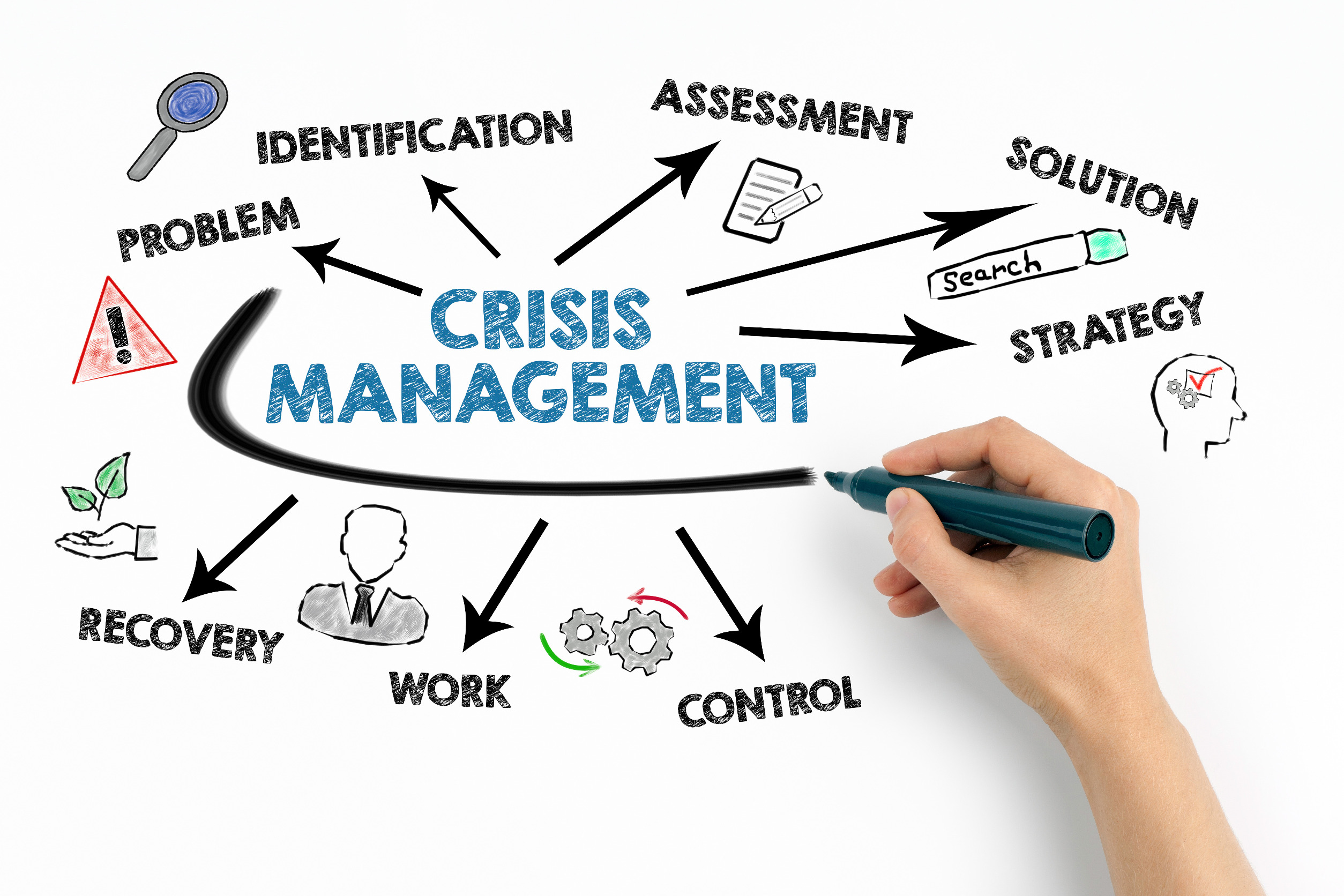Most organizational change communication strategies do not include crisis communication in their communication work.
However, this is a very important discipline to think about in advance of potential program risks occurring.
Read below for an interesting overview of how to handle crisis communication and see how you could apply it to your change management strategy.
Crises are unavoidable, and not planning for them is madness in today’s PR-oriented, reputation-based business world.
By following five simple strategies, you can avoid damage to your reputation and, more importantly, maintain a positive employee attitude toward your company using effective change management strategies, as they will eventually jump ship if they feel unsupported.
Last year (2023), crisis management was the second most significant risk-related investment of US enterprises, after cyber resilience, proving its value in protecting your organization and keeping it financially sustainable.
5 Change Crisis Communication Strategies
However, investment has no value if organizations don’t follow effective strategies to ensure success.
See below the five top-change crisis communication strategies to bounce back from any crisis.
1. Create a crisis communication plan
Unforeseen crises underscore the importance of proactive preparation by establishing a crisis communication plan and a dedicated crisis management team.
Essential components of a crisis communication plan include:
- Defining objectives.
- Assembling team members.
- Identifying target audiences.
- Outlining sequential response measures.
- Establishing internal communication strategies.
Leaders must also integrate intervention strategies to mitigate potential harm.
Not only that, but the composition of the crisis management team is pivotal, tasked with situational analysis, solution formulation, and employee engagement, and includes crisis change management expertise.
Amid crisis, tensions escalate, necessitating a concise, actionable plan distilled into bullet points or minimal steps for swift dissemination and implementation across organizational units.
2. Put your employees first
A crisis usually brings up strong negative emotions.
If your company makes mistakes, it will impact your employees’ well-being and productivity.
When this happens, don’t go into blame mode.
Instead, try to foster a supportive and collaborative attitude rather than a defensive communication climate on intranets and internal social media, including your company’s employee newsletter.
There are productive ways to respond to unhappy customers if you see negative comments on your social media pages.
Here are five possible responses:
- Open Communication: Provide updates and encourage feedback.
- Supportive Resources: Offer counseling and stress management.
- Recognition: Appreciate employees’ efforts and resilience throughout the crisis.
- Flexibility: Allow remote work and flexible schedules to allow time with family.
- Development: Invest in training and career growth initiatives.
Changing HR policy is often the response most employees prefer.
Try to find a solution by communicating with your team members.
This open communication will help you solve the problems, reduce the negative impact, and restore your brand image in your employees’ eyes.
3. Communicate with your organization accurately and efficiently
In a crisis, inaccurate information heightens panic.
First, ensure accuracy in all internal responses on your website, social media, and with external public figures like journalists.
Next, provide frequent updates to alleviate uncertainty and rumors.
Then, designate a spokesperson and maintain honesty, transparency, and consistency across all communication channels, internally and externally.
4. Use technology as your focus for crisis communication
Internal enterprise communication tools like Slack and Happero are vital crisis communication platforms.
It is essential that change managers manage technology calmly and effectively in a crisis, posting updates frequently to foster interaction through shares and responses to form a strong link between every tier of the organization during a crisis.
Survey tools like SurveyMonkey can also be practical for pulse surveys to measure employees’ satisfaction with how their organization deals with a crisis over time.
5. Conduct post-crisis evaluation and follow-up communication
Typically, the severity of a crisis wanes with time. After a crisis comes an opportunity to assess your company’s response.
Consider these queries for introspection with your team:
- What strengths did we exhibit during the crisis?
- What weaknesses did the crisis expose?
- Are we doing okay now, after the crisis?
- What could we do differently next time we encounter a crisis?
- How can we use what we’ve learned in our change communication planning?
Navigating crisis communication poses inherent challenges. Preparedness, honesty, and responsiveness are imperative.
Sustain ongoing communication across diverse channels, leveraging social media as a vital conduit.
Post-crisis, assess performance and engage with your audience to reinforce trust and glean insights for future refinement.
Example: United Airlines
It is one thing to hear the importance of crisis communication strategies, but examining examples clarifies its significance.
Let’s look at United Airlines and how they dealt with a crisis in 2017.
In 2017, United Airlines faced heightened scrutiny due to an incident involving Dr. David Dao.
Initially shifting blame, their CEO’s response drew criticism. However, public backlash led to accountability and promised reforms, serving as a cautionary tale in crisis management.
After the initial response, United Airlines carried out the following crisis management strategies:
- Apology and acceptance of responsibility: United Airlines swiftly apologized and took responsibility for the incident.
- Internal investigation and policy review: They pledged to conduct an internal investigation and comprehensively review policies.
- Enhanced customer service training: The airline announced plans to improve customer service training.
- Engaging with stakeholders: United decided to commit to actively engaging with stakeholders, including passengers, employees, and shareholders.
Prepare for crises to limit the damage
It can seem unnecessary to prepare for crises if you have not encountered one before.
All the same, preparing for a negative experience and being ready for it will pay for itself many times over if you invest early.
It is also helpful to consider emerging change management thought leaders for innovative crisis change management approaches.
Employees will feel more secure and less likely to depart the company when they know their company is ready for any crisis.
As a result, it will also increase productivity as they can focus on completing tasks in a stable environment.
Satisfied employees can help your organization become agile and react quickly to crises, allowing leaders to communicate confidently with them making your company successful and sustainable.

























